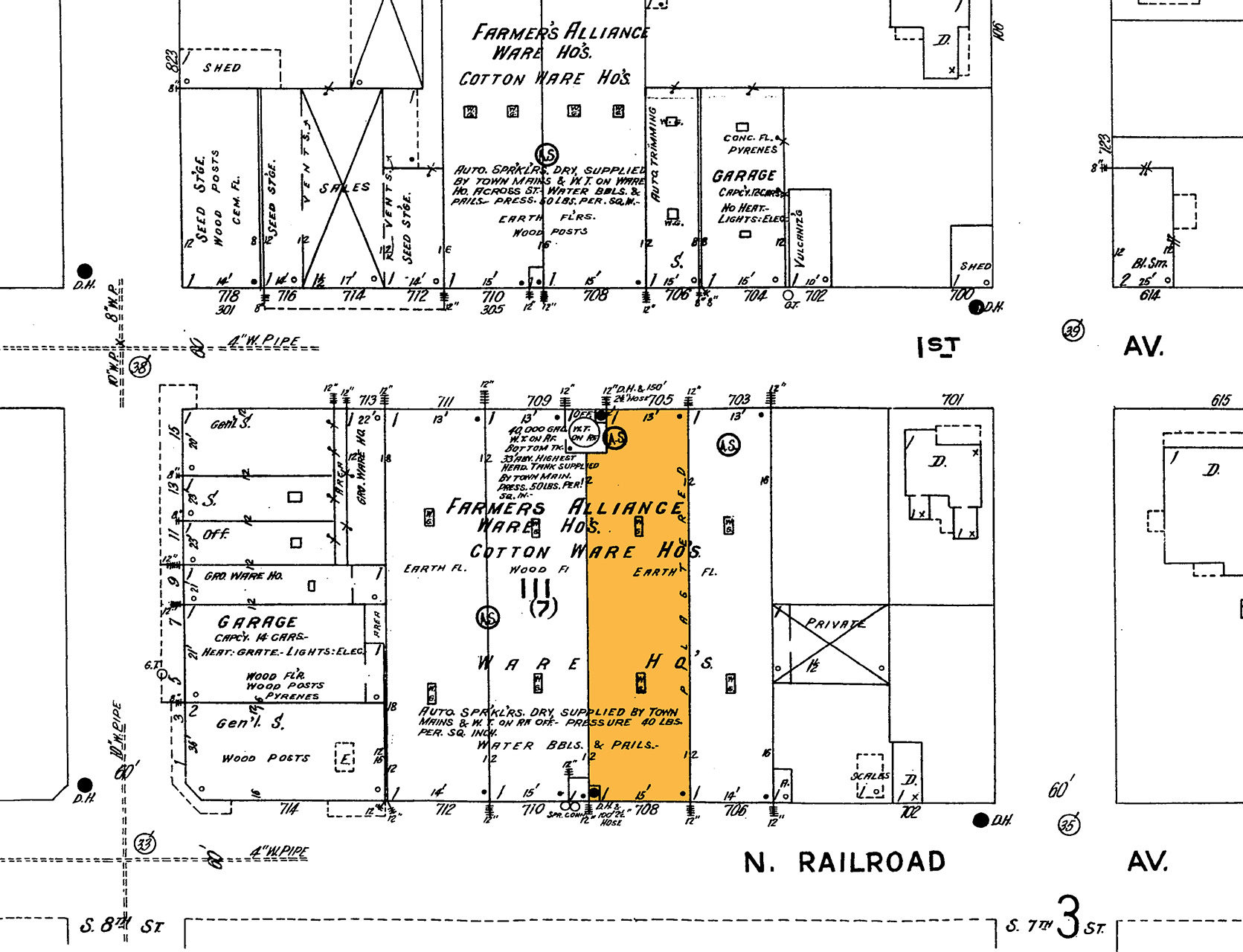




The familiar rumble of the train rattling and whistling down the tracks frequently fills the air in downtown Opelika, Alabama. It was this railroad network that fueled Opelika’s rapid growth during the 19th and 20th centuries and still structures the downtown grid today. Next to these rails are a collection of historic cotton warehouses in which lively businesses are beginning to bustle again.
At the core of the historic cotton warehouse district lies a void where a building once stood. Previously used as a loading dock, this outdoor area is now being reinterpreted as a pocket park for the surrounding warehouse district. The conceptual design for the pocket park imagines this fragmented space as an animated event venue complete with a central stage, layers of viewing platforms, gaggles of shade trees, and industrial-scaled pivoting steel doors. Long after cotton was dethroned, this space aspires to re-emerge as the epicenter for the community of makers, artists, and creatives that are flocking the district.